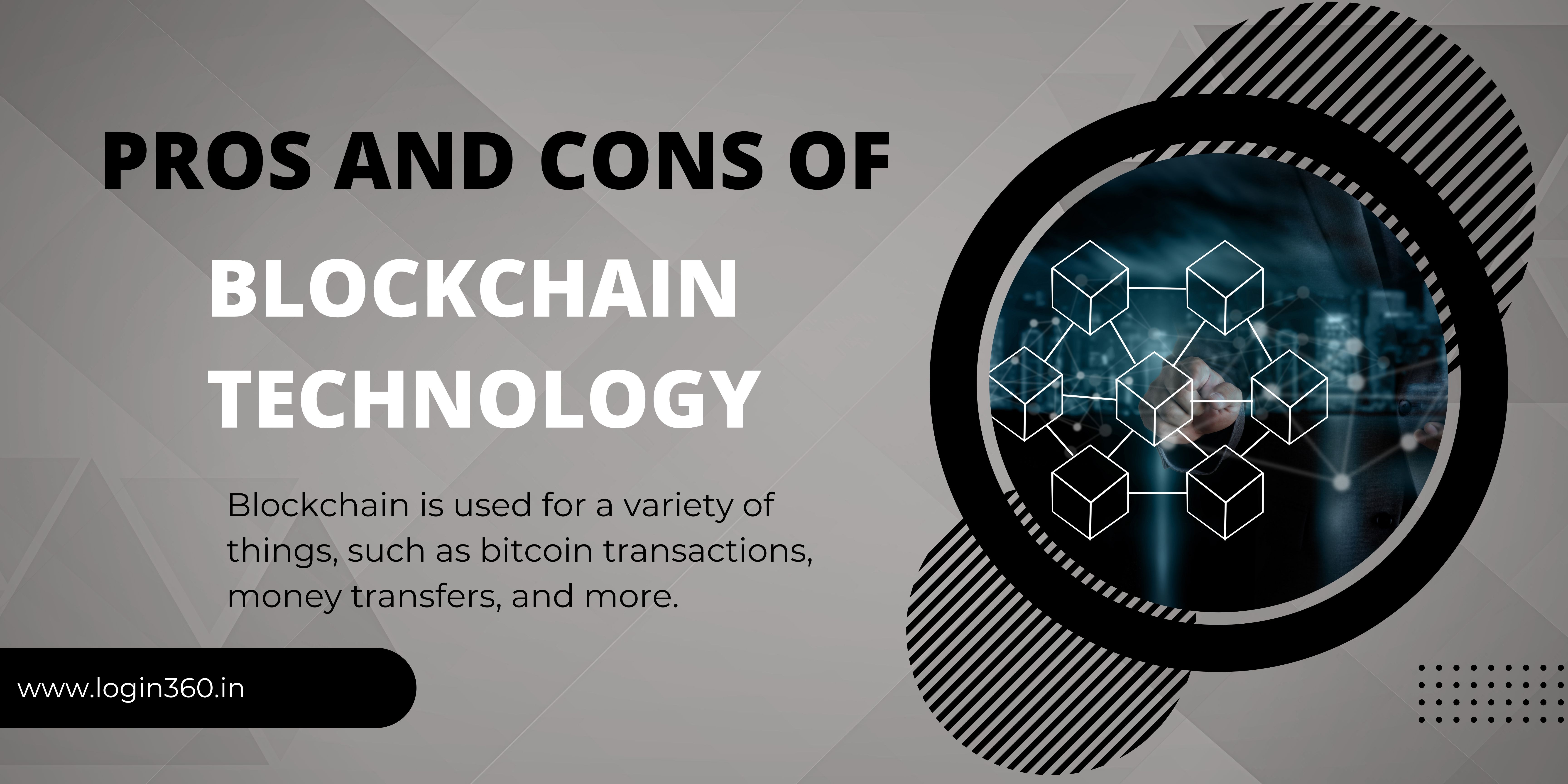What is Blockchain technology?
With the use of blockchain technology, it is possible for unreliable parties to agree on a shared digital past. Because digital assets and transactions might theoretically be readily falsified and/or reproduced, it is crucial to have a shared digital history. This issue is resolved by blockchain technology without the need for a reliable middleman.
This explanation of blockchain technology will provide straightforward explanations and parallels. It will also define decentralized autonomous organizations, the blockchain, initial coin offerings, stablecoins, non-fungible tokens, Ethereum, Bitcoin Cash, Litecoin, Dogecoin, Cardano, and XRP. We'll showcase promising applications of blockchain technology along the way.
Pros of Blockchain technology
- Greater Transparency
- Process Integrity
- Faster processing
- Supply Chain Management
- Security
Greater Transparency
Through the use of blockchain technology, transaction histories are becoming more transparent. All network members share the same documentation as opposed to having individual copies because blockchain is a sort of distributed ledger. Only by consensus, which requires unanimous agreement, can that shared version be updated. To update a single transaction record, all following records must also be changed, and the entire network must cooperate.
The decentralized character of the blockchain makes it resistant to takeovers or corruption by centralized entities like banks and governments. The blockchain's ledger is also open for anyone to examine, verify, and audit data and transactions because this data is dispersed throughout a large network of unrelated computers and systems.
Process Integrity
Users can rely on transactions to proceed exactly as the protocol directs because it does away with the necessity for a reliable third party. This program was created in such a way that any block or even a transaction that adds to the chain cannot be modified for security reasons, which ultimately provides a very high level of protection.
Faster processing
Prior to the development of the blockchain, it took a long time for traditional banking institutions to complete and start a transaction; however, with the advent of blockchain technology, transaction speed significantly accelerated. Before the advent of Blockchain, the entire banking procedure took about three days to settle, but it was cut down to almost minutes or even seconds after that.
Supply Chain Management
Traceability and cost-efficiency are two advantages of this cutting-edge technology. Blockchain makes it possible to track commodities, including their origin, amount, and other details. This streamlines procedures like ownership transfers, payment assurance, and production process assurance.
Security
Because each person who joins the Blockchain network receives a special identification number that is connected to his account, blockchain technology is incredibly safe. By doing this, you may be certain that the account owner is handling all transactions personally. Any hacker would find it more difficult to alter the chain's established configuration thanks to the block encryption in the chain.
Cons of Blockchain technology
- Large energy consumption
- Unavoidable security flaw
- Performance, Redundancy, Indestructible
- Maintenance Cost
- Digital Signature Verification
Large energy consumption
The amount of power used by the Blockchain is comparatively significant; in one year, just the power used by Bitcoin miners exceeded the total amount of power used by 159 different nations per capita.
One of the purposes of this consumption is to maintain a real-time ledger since each time a new node is created, simultaneous communication with every other node is required.
Unavoidable security flaw
A significant security weakness exists in bitcoin and other blockchains: if more than 50% of the computers serving as nodes on the network utter a falsehood, the lie will be accepted as the truth. When he introduced bitcoin, Satoshi Nakamoto termed this a "51% attack" and underlined it.
Since no one wants to unintentionally impact the network, bitcoin mining pools are actively watched by the community.
Performance, Redundancy, Indestructible
While centralized databases only process transactions once or twice, the blockchain requires independent processing by each node in the network to achieve the same outcome.
Since each network node stores a copy of the blockchain, special services or governments cannot shut down Bitcoin because it is decentralized and lacks a centralized server.
Maintenance Cost
Due to energy consumption, a Bitcoin transaction typically costs between $75 and $160. If the energy problems are not handled, the storage issue can also be covered.
The total transaction history is stored by each client of the bitcoin network and can now reach 100GB in size. The size of the network expands more quickly the more transactions that are completed on it.
Digital Signature Verification
Because transactions propagate between nodes in a peer-to-peer manner on the blockchain network, every transaction must be signed using the public-private cryptography algorithm known as the Elliptic Curve Digital Signature Algorithm (ECDSA). These signatures need sophisticated computations to create and validate. In centralized databases, after a connection has been made, there is no need to manually review each request that comes in.
Conclusion
After weighing the advantages and disadvantages of blockchain technology, it is clear that its reputation will only continue to increase, largely because of words like Bitcoin and Ethereum. The coin that virtually every business person always brings up. It is no longer a question of when legacy organizations will adopt the technology as we enter the third generation of blockchain. It only remains to be seen when.





